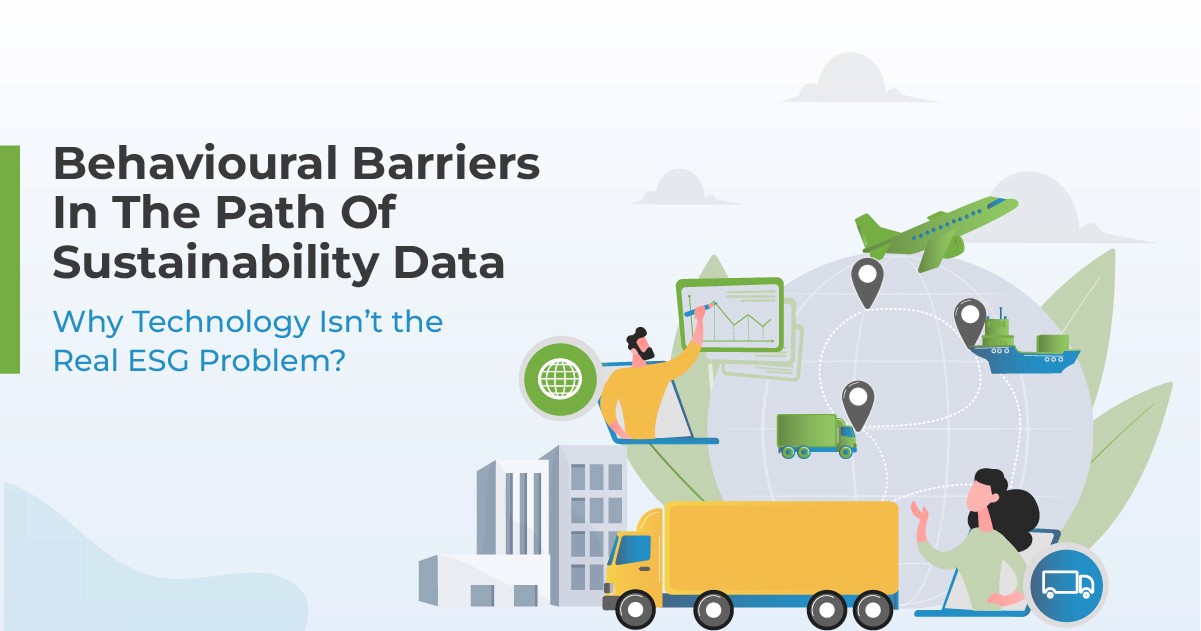The Business Responsibility and Sustainability Report has become a compulsory section of the annual disclosures for India's biggest listed firms. Created to bring clear and consistent information to environmental, social, and governance disclosures–BRSR is quickly becoming an important part of corporate reporting. With stakeholder growing scrutiny, companies are now pressurised to ensure these reports are accurate, timely, and detailed.

Source: Write Canvas
Why ESG Reporting Is Becoming a Board-Level Priority
Today, ESG reporting is far more than sustainability--it directly shapes strategy and steers investor trust. A strong ESG framework not only improves transparency but also proves that the firm has long-term thinking. As the BRSR ties Indian businesses to the same ESG rules many overseas businesses already follow, leaders are now taking responsibility for their social and ecological footprints.

Source: Legal Mantra
Manual Reporting Challenges Are Holding Teams Back
Despite the good intent, BRSR is still a complicated procedure for many companies. Data is taken from various departments using inconsistent formats and timelines. The result is an unclear file, which brings reputational risks and regulatory scrutiny. The lack of similar formats makes it almost impossible to pull out clear, action-oriented insights.
Compliance Is Becoming More Stringent
Regulatory authorities keep tightening the rules around companies' disclosures. As a result, firms now have to deliver verified, detailed data much faster than before. These regulatory mandates force businesses to build sturdy, ongoing compliance systems instead of rearranging at the last minute.
How Technology Streamlines the BRSR Process
Let’s explore how digitisation tackles the usual struggles of BRSR reporting and make the whole process quicker, smoother, and accurate.
Centralised Data Management Improves Efficiency
A big obstacle in BRSR work is pulling together numbers from different departments. With digital tools, firms can funnel all relevant data into one central reporting system, keeping metrics uniform. That minimizes duplications along with reducing errors, and saves time-consuming manual cross-checking.
Automation Reduces Time and Errors
Automation handles most routine tasks, from typing to formatting and validation. When systems are configured to collect and process information from many sources–data automation replaces manual spreadsheets. The result is a much quicker process and a final report that is accurate.
Cloud Technology Unlocks Smoother Team Coordination & Collaboration
New cloud applications allow a large number of groups to share their reporting systems simultaneously. Thanks to secure, role-based access, different departments can upload data in real-time. The cloud platform also backs up and protects that data automatically, keeping the business running smoothly.
Real-Time Dashboards Make Data Easier to Understand
Real-time dashboards provide visual insights indicating trends and anomalies, as compared to having to go through pages of static tables. In real-time analytics mode, decision-makers can follow the ESG progress during the year and change policies more easily before the reporting deadline to achieve better results.
Structured Workflows Keep Everyone on Track
Structured collaboration features such as approval streams, comment threads and updates are usually included in digital reporting platforms. This enhances the efficiency of workflow in the enterprise by ensuring clear assignment of tasks alongside automated reminders. As everybody follows the same timeline, bottlenecks and misunderstandings associated with it are minimized.
Simplified Audit Trails Strengthen Trust
Audit-readiness is an essential feature of BRSR, and particularly in those metrics which need some kind of third-party assurance. In digital systems, all changes, entries and approvals are automatically reflected. This enhances the degree of audit readiness and provides a transparent history of information that could be easily audited by both the inside and external auditors.
Scaling Sustainability with Future-Ready Digital Tools
Technology would help in solving the existing problems with reporting while also preparing businesses to meet future demands.
Modular Tools Offer Long-Term Flexibility
The entities that adopt a modular digital platform can adjust due to a change in reporting requirements. Rather than replacing whole systems, they can add on new functions: the carbon footprint or reporting on human rights. These digital transformations guarantee that companies are future-ready without requiring a lot of reinvestment.
Benchmarking and AI Will Drive Next-Level Insights
With the development of technology, firms can start utilizing AI-based tools to compare their ESG rates with the industry. They can detect irregularities, suggest a fix and even produce an early draft of the narrative. Businesses can learn to use compliance as a competitive advantage with the appropriate infrastructure in place.
Technology Makes BRSR Reporting Smarter, Not Harder
Introduction of BRSR with the aim of enhancing such detailed and organized sustainability reports is the move in the right direction for corporate India. Compliance, however, when done manually, is not very effective and can not be scaled effectively. Complexities in business should be reduced, accuracy should be enhanced, and much time can be saved because of adopting the right digital tools.
Regardless of whether data systems are centralized, workflows automated, or the dashboard is real-time, each technological layer makes the compliance process easier to manage as it enhances the quality of reports. With time, this will create more persistent governance, boost the confidence of stakeholders, and help businesses lead functionally.
With uncertainty mounting in ESG requirements across the world, intelligent BRSR reporting will not only support a regulatory requirement but also define future judgments, credibility, and recollection of the business.
Final Words
BRSR is a part of the modern regulatory environment that is rapidly changing, and businesses cannot leave it as a last-minute reporting task. It requires all-year-round dedication supported by dependable machinery and on-time information. The technology will help the companies simplify the complicated procedure, lower reporting burnout and keep up with compliance schedules.
Smarter BRSR reporting can help businesses go further than just checking boxes; it lets them articulate their sustainability narrative with content and confidence. Automation, analytics, and digital collaboration enable an organization to reduce time, but they can also build a solid ESG foundation that will sustain the company in the long term. The future of reporting is digital; those who act today will be ahead in the future.





